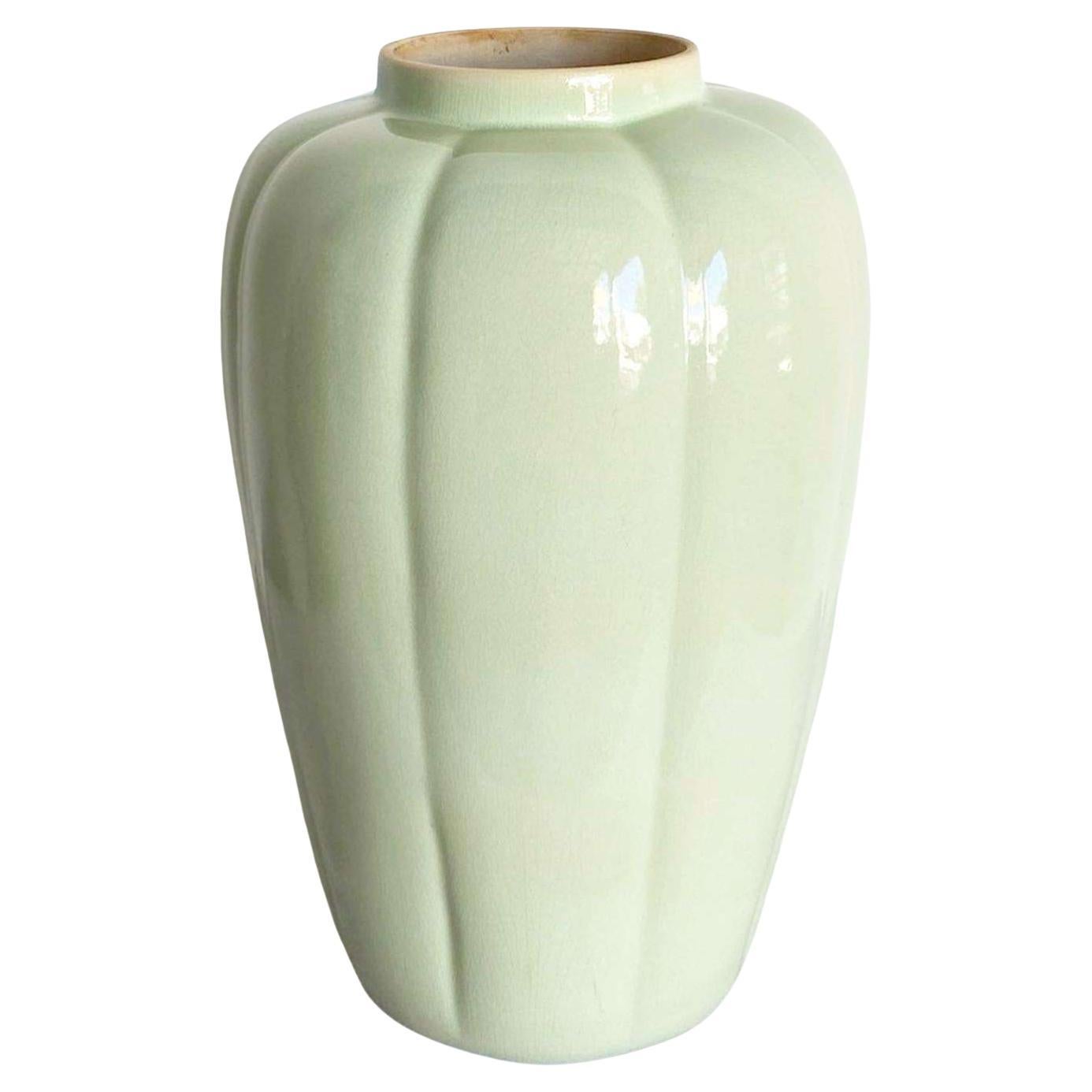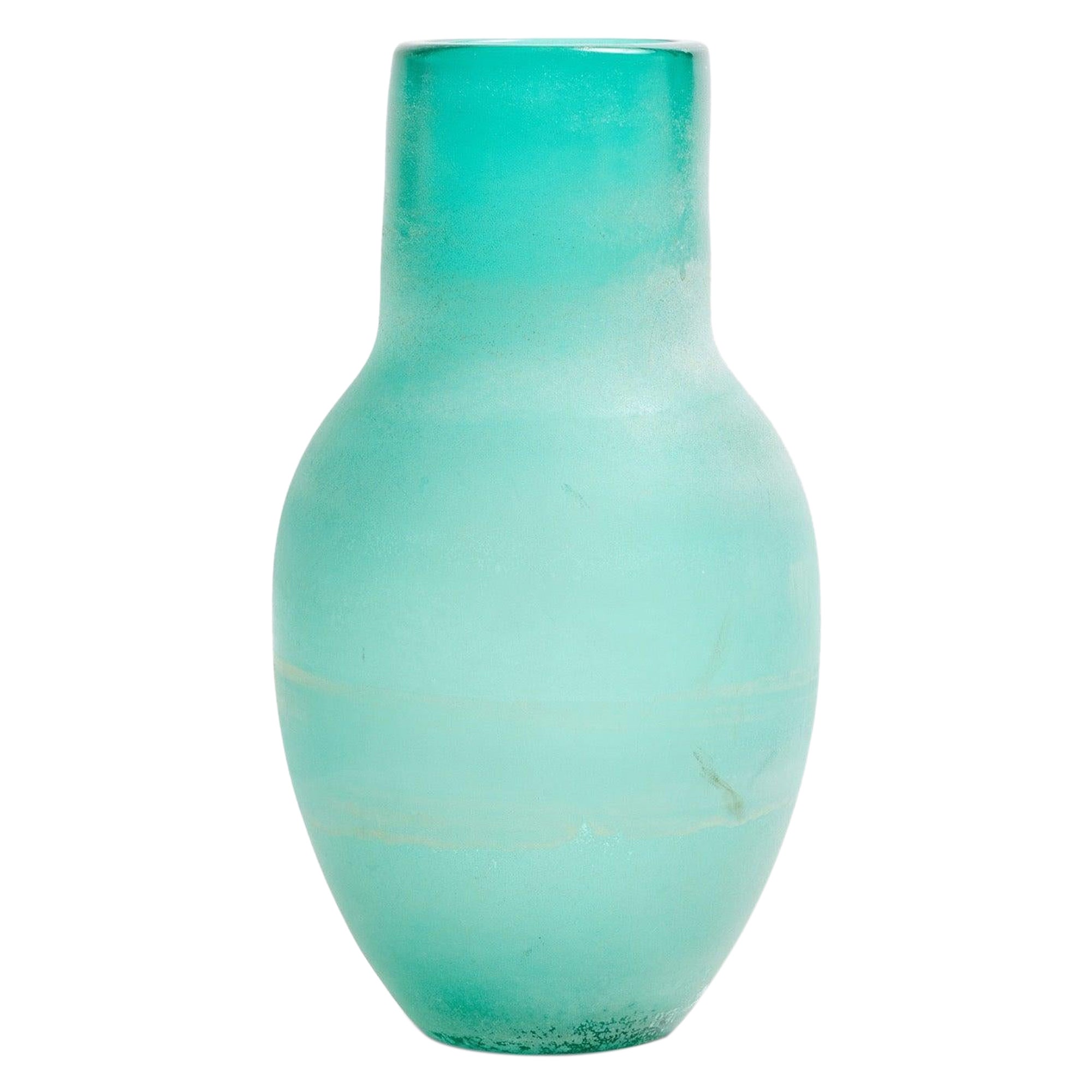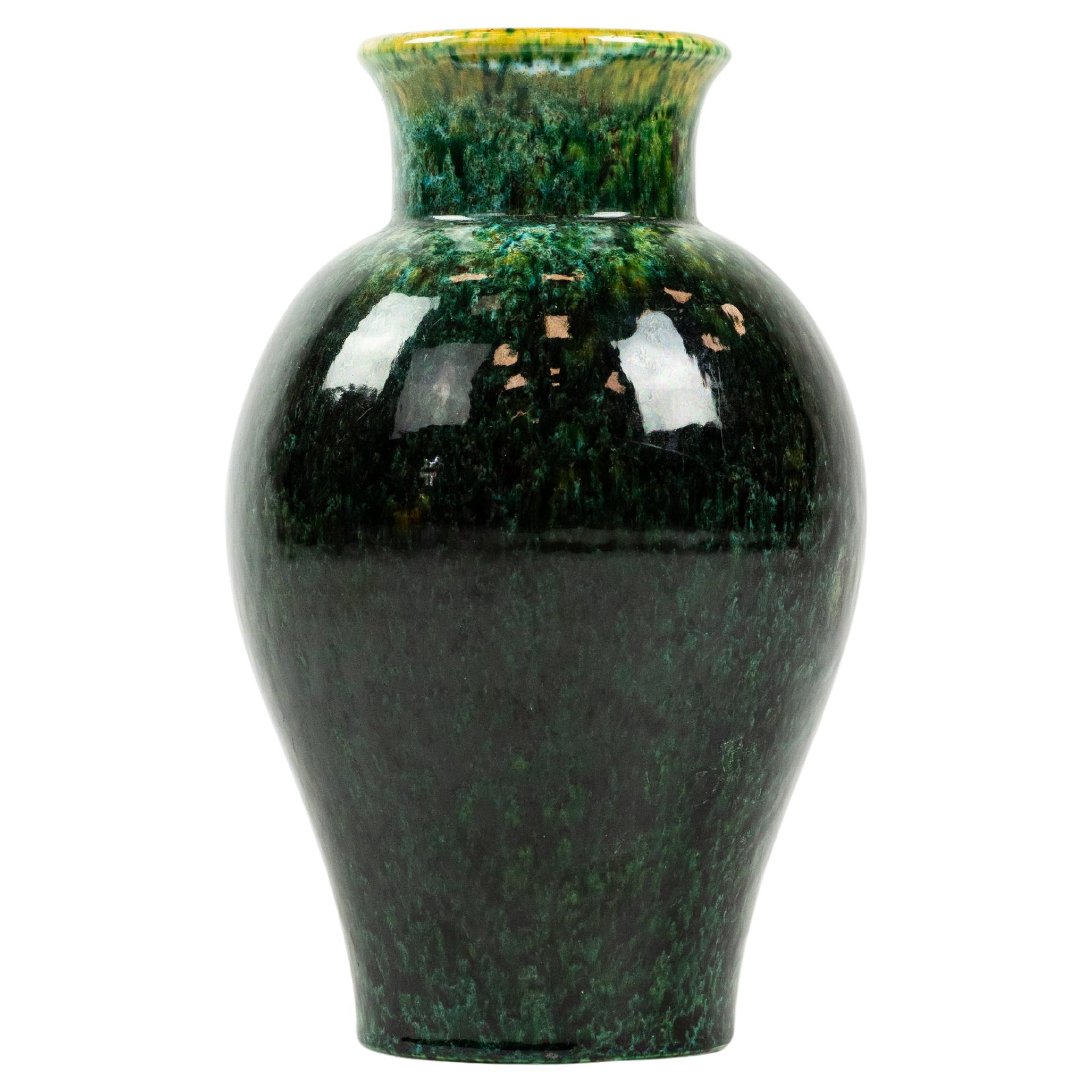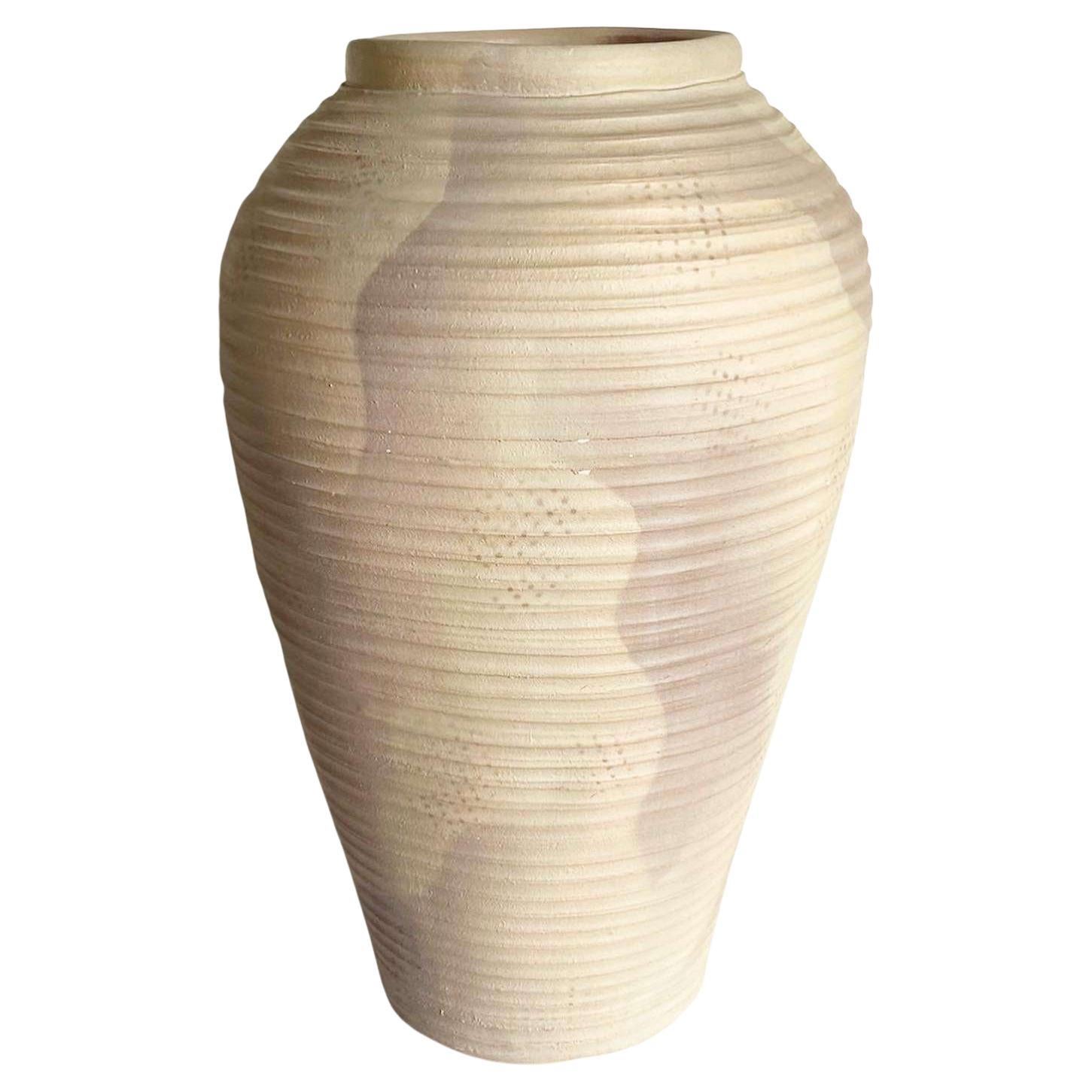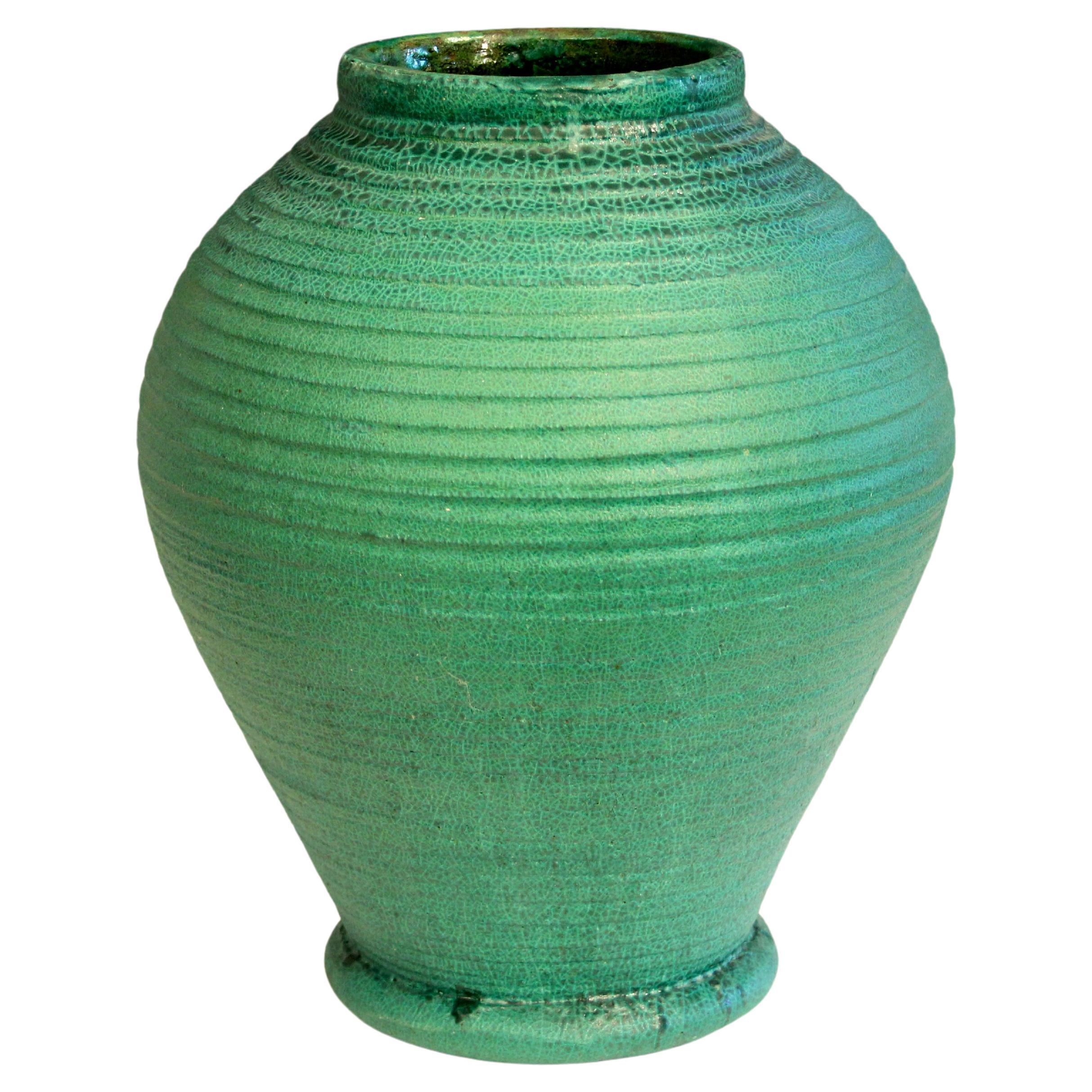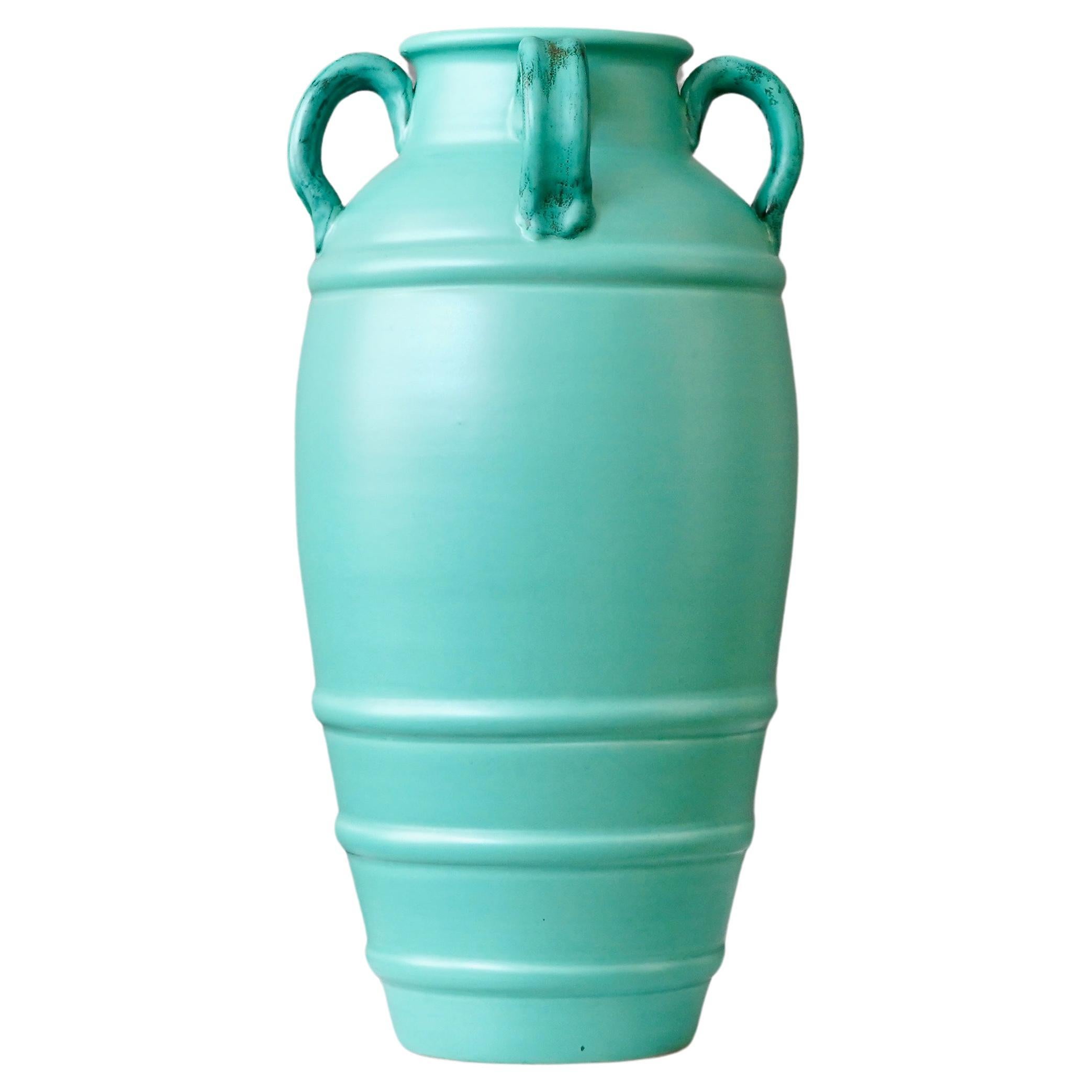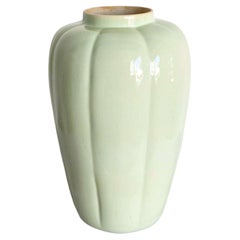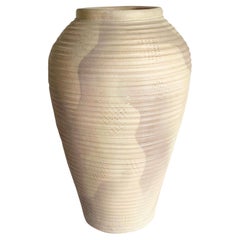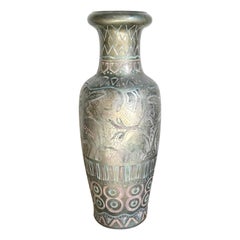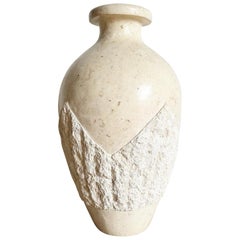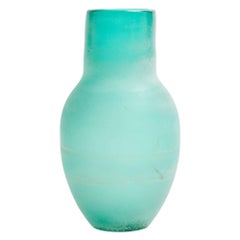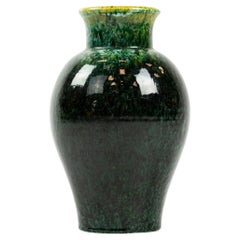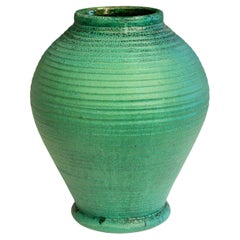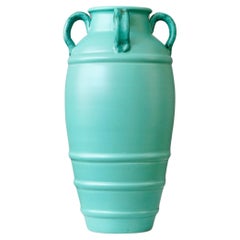Items Similar to Postmodern Green Rippled Ceramic Floor Vase
Want more images or videos?
Request additional images or videos from the seller
1 of 7
Postmodern Green Rippled Ceramic Floor Vase
$495
£375.87
€429.83
CA$691.59
A$769.20
CHF 401.65
MX$9,360.29
NOK 5,129.68
SEK 4,810.74
DKK 3,207.99
Shipping
Retrieving quote...The 1stDibs Promise:
Authenticity Guarantee,
Money-Back Guarantee,
24-Hour Cancellation
About the Item
Exceptional postmodern ceramic floor vase. Features a hue blue green textured finish.
- Dimensions:Height: 26.5 in (67.31 cm)Width: 15.5 in (39.37 cm)Depth: 15.5 in (39.37 cm)
- Style:Post-Modern (In the Style Of)
- Materials and Techniques:
- Place of Origin:
- Period:1980-1989
- Date of Manufacture:1980s
- Condition:Wear consistent with age and use. Minor wear as seen in the photos. All items are sold in the condition they are acquired in and nothing has been done to restore or repair them. There may be some wear as can be expected with items of this age.
- Seller Location:Delray Beach, FL
- Reference Number:1stDibs: LU6663235606382
About the Seller
5.0
Gold Seller
Premium sellers maintaining a 4.3+ rating and 24-hour response times
Established in 2018
1stDibs seller since 2022
202 sales on 1stDibs
Typical response time: 1 hour
- ShippingRetrieving quote...Shipping from: Delray Beach, FL
- Return Policy
Authenticity Guarantee
In the unlikely event there’s an issue with an item’s authenticity, contact us within 1 year for a full refund. DetailsMoney-Back Guarantee
If your item is not as described, is damaged in transit, or does not arrive, contact us within 7 days for a full refund. Details24-Hour Cancellation
You have a 24-hour grace period in which to reconsider your purchase, with no questions asked.Vetted Professional Sellers
Our world-class sellers must adhere to strict standards for service and quality, maintaining the integrity of our listings.Price-Match Guarantee
If you find that a seller listed the same item for a lower price elsewhere, we’ll match it.Trusted Global Delivery
Our best-in-class carrier network provides specialized shipping options worldwide, including custom delivery.More From This Seller
View AllPostmodern Light Green Scalloped Ceramic Vase
Located in Delray Beach, FL
Incredible vintage postmodern ceramic vase. Features a gloss might green finish with a scalloped shape.
Category
Vintage 1980s American Post-Modern Scholar's Objects
Materials
Ceramic
Postmodern People Brushed Ceramic Floor Vase
Located in Delray Beach, FL
Exceptional vintage postmodern ribbed ceramic floor vase. Features a beige finish with a purple brushed accent.
Category
Vintage 1980s American Scholar's Objects
Materials
Ceramic
Postmodern Hand Painted and Carved Large Floor Vase
Located in Delray Beach, FL
Elevate your space with the Postmodern Hand Painted and Carved Large Floor Vase, a true artistic statement piece. This vase showcases bold colors and abstract designs typical of the ...
Category
20th Century American Post-Modern Scholar's Objects
Materials
Ceramic
Postmodern Polished and Raw Tessellated Stone Floor Vase
Located in Delray Beach, FL
Elevate your decor with the Postmodern Polished and Raw Tessellated Stone Floor Vase. This unique vase combines polished and raw stone, of...
Category
20th Century Philippine Post-Modern Scholar's Objects
Materials
Stone
Postmodern Faux Tessellated Stone Plaster Floor Vase With Sculpted Rope
Located in Delray Beach, FL
Add a touch of postmodern artistry to your space with this Faux Tessellated Stone Plaster Floor Vase, adorned with a sculpted rope design. Crafted f...
Category
20th Century Post-Modern Scholar's Objects
Materials
Plaster
Postmodern Polished and Raw Tessellated Stone Floor Vase
Located in Delray Beach, FL
Elevate your decor with this Postmodern Polished and Raw Tessellated Stone Floor Vase. Featuring a mix of polished and raw stone, this vas...
Category
20th Century Philippine Post-Modern Scholar's Objects
Materials
Stone
You May Also Like
Textured Green Murano Vase/Vessel by Livio Seguso for Arte Vetro, 1970's
Located in Sagaponack, NY
A substantial textured murano glass vase / vessel in a vibrant green.?
Category
Vintage 1970s Italian Vases
Materials
Glass
Lovely Green Accolay ceramic vase
By Accolay Pottery
Located in NICE, FR
Lovely Green and Yellow glazed ceramic vase from Accolay Pottery. Firmed under the base. Very good condition.
Accolay ceramics, produced in the Burgundy region of France, gained pro...
Category
Vintage 1960s French Mid-Century Modern Vases
Materials
Ceramic
Huge 15" Merrimac Pottery Matt Green Arts & Crafts Ribbed Turned Antique Vase
By Merrimac Pottery
Located in Wilton, CT
Large antique Merrimac Pottery Arts and Crafts vase in great swelling form with defined ribs and alligatored matt green glaze. Merrimac Pottery operated in Newburyport, Ma. from 1897...
Category
Antique Early 1900s American Arts and Crafts Vases
Materials
Pottery
Green Art Deco Ceramic Floor Vase by Ewald Dahlskog, Bo Fajans, Sweden, 1930s
By Eva Jancke-Björk, Bo Fajans, Ewald Dahlskog, Gefle
Located in Malmö, SE
A grand Scandinavian Modern floor vase with amazing glaze.
Designed by Ewald Dahlskog for Bo Fajans, Sweden, 1930s.
Great condition.
Makers marks on base of vase.
Ewald Dahlskog...
Category
Mid-20th Century Swedish Scandinavian Modern Vases
Materials
Ceramic
Speckled Green Hexagonal Fluted Gourd Vase
Located in Carson, CA
Speckled green hexagonal fluted gourd vase
Shape: Vase
Color: Green
Size (inches): 8W x 8D x 16H
Warranty Information: Each piece was handcrafted by skill and joy. Imperfecti...
Category
21st Century and Contemporary Chinese Chinese Chippendale Vases
Materials
Porcelain
$323 / item
Crackle Celadon Vase
Located in Chicago, IL
Described in ancient Chinese texts as the “moon dyed with spring water,” celadon ceramics are prized for their well-proportioned forms and luminous blue-green glazes. This vintage ce...
Category
Late 20th Century Thai Minimalist Ceramics
Materials
Stoneware
More Ways To Browse
Green Floor Vase
Postmodern Floor Vase
Chinese Ink Stone
Antique Calligraphy Brushes
Antique Scholars Desk
Antique Chinese Calligraphy Brush
Jade Horse
Japanese Scholar Stone
Horsehair Brush
Gongshi Stones
Jade Snuff
Jade Snuff Bottle
Chinese Jade Snuff Bottle
Chinese Scholars Desk
Chinese Brush Stand
Chinese Scholar Seal
Japanese Scholars Box
Korean Calligraphy
